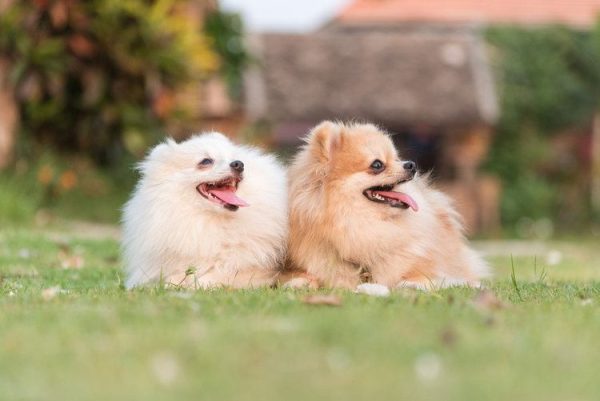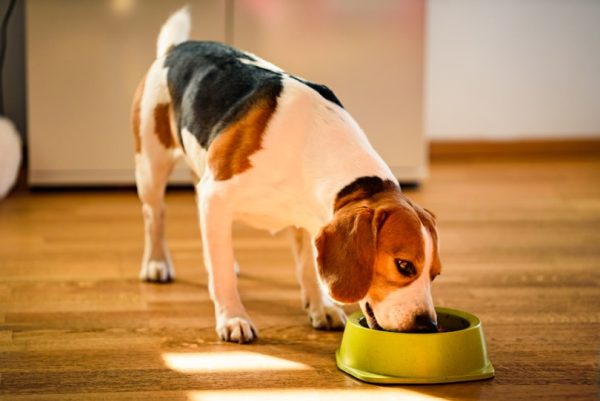Our dogs are typically happy-go-lucky animals that absolutely love to play! It’s the most uplifting part of their day. So, if you’ve noticed that your pup is quite tuckered out after exercise, more so than their other canine peers, it might make you wonder why.
In this article, we’re going to explore the different reasons why your dog might be more exhausted than usual and how you can help them if there is an underlying problem.

Dog Exhaustion After Exercise
If your dog is extra tired after running around or exercising, it can have so many different underlying reasons. Ultimately, you will have to take a good look at the behavior and additional signs to figure out why your dog seems so exhausted.
If you’ve particularly noticed them getting tired after exercise, we’re going to explore exactly what exhaustion is and all of the different reasons they might experience it. One thing is for sure, if you notice any change in your dog’s demeanor or behavior, you’re doing the right thing by trying to get to the bottom of it.
What Is Exhaustion?
Exhaustion is quite different from being tired. When a dog is tired, they might simply wear down and show that they aren’t willing to keep being active for the time being. We can all relate, right? Exhaustion is a bit different. Exhaustion takes tiredness to a new level.
- Chronic sleepiness
- Disinterest in activities
- Muscle weakness
- Slowed responses
- Change in behavior
Being exhausted after a bigger workout than usual is expected, such as a jog or long romp at the dog park. But sudden exhaustion after their normal amount of activity is not normal. So, what is the underlying reason?
If you are concerned about your dog, we suggest you speak with a vet.
If you need to speak with a vet but can't get to one, head over to PangoVet. It's our online service where you can talk to a vet online and get the advice you need for your pet — all at an affordable price!


The 10 Causes of Abnormal Levels of Dog Exhaustion
If your dog is feeling extra exhausted lately, and you can tell that they’re not feeling quite normal, you’re naturally going to search for the culprit. Exhaustion in dogs related to exercise can be something simple, but it can also signal a much more sinister or serious problem.
Because it can be hard to identify as an owner, it is important to seek veterinary care if you suspect a bigger issue or the exhaustion worsens.
1. Being Overweight/Obesity
Obesity is an ever-growing problem with our canine companions. Our dogs love to eat, and sometimes we unintentionally overfeed them. Over time, this can lead to unnecessary weight gain, contributing to many different health conditions.
Along with tiring quickly, being overweight and obese can contribute to further illnesses such as diabetes and joint issues. To find out if your dog is overweight or obese, see your veterinarian. They will likely refer to a body condition score to see where your dog fits in.
- Wearing down quickly on walks or during playtime
- Needing frequent breaks
- Panting with minimal exertion
Your veterinarian will recommend what they feel is best to help your dog lose weight and get back to their normal body condition.

2. Infection
An infection might be to blame if your dog is getting tuckered out more easily than usual. Luckily, most infections are at least easy to pinpoint because of the additional symptoms.
- Fever
- Lethargy
- Changes in behavior
- Confusion
- Unpleasant odor
- Tremors
- Vomiting/diarrhea
Dogs can suffer from bacterial, fungal, or viral infections. Each infection presents with its own set of signs, so it is important to note any other issues that you might have noticed.
3. Metabolic Disease
Metabolic or endocrine diseases can severely impact your dog’s ability to exercise. Often, these diseases impact the production of hormones like cortisol and insulin.
Some of these issues can include thyroid or adrenal gland insufficiencies or overproductions. Untreated, it can have whole-body effects, including exercise intolerance.
- Excessive hunger
- Excessive thirst
- Hair loss
- Weight loss/gain
- Loss of energy
Metabolic issues can lead to other health concerns down the line, so it is important to control many issues as they present to avoid more serious complications.

4. Heart Complications
Regarding exhaustion, we want to stress the importance of getting your dog’s heart checked. If the situation doesn’t really seem to have an obvious underlying cause, it could be a heart problem that could potentially have devastating effects if not treated in a timely fashion.
If you notice any exercise-related exhaustion, getting them to the vet to check for heart issues is one of the most important things you can do. Many times, exhaustion after exercise will have a simpler explanation, but it’s always best to be safe rather than sorry.
- Coughing
- Fainting
- Loss of appetite
- Abnormal swelling of extremities
- Enlarged abdomen
- Weight loss
- Changes in gums and tongue
- Restlessness
- Lack of energy
- Fast breathing
Some specific heart issues with dogs include arrhythmias, valve disease, stenosis, carditis, and myopathy.
5. Pain
If your dog is in pain for any reason, they might have less of a tolerance for exercise and other dogs. Pain can cause a number of different responses in the body, and sometimes, it’s hard to detect where the pain is coming from.
If your dog has internal pain, you might not be able to visibly see it, and they might not wince when you touch any part of their body. Other times, if you do an examination, you can likely find tender points on your dog’s body that could give you a better idea as to what is causing the pain and what areas are suffering.
Pain can come from a number of sources, including physical injury or internal damage. If your dog is in pain, however, they might not be able to tolerate exercise like they once did.
- Wincing
- Shying away from physical contact
- Changes in behavior
- Vocalizing
- Tremors
- Limping
- Yelping
- Mobility issues
- Fast breathing
- Irritability
- Drooling
- Tense muscles
If you notice obvious signs of pain, don’t hesitate to get to your vet! Your pup absolutely needs to be seen.

6. Certain Medications
Our dogs can be prescribed medications for a number of ailments. If your dog was recently treated with medication, they might have less tolerance for exercise due to the side effects. The problem with medications is every dog reacts differently. If your dog is on or has been on medication, it is important to contact your vet so you can figure out all of the potential side effects.
7. Kidney Disease
If your dog has a problem with their kidneys and you don’t know it, it can cause exercise intolerance. The issue with kidney malfunction is that the kidneys are vital for survival. So, if your dog’s kidneys start to fail, they unfortunately cannot regenerate.
Usually, older dogs suffer from the issue, generally impacting dogs older than 7 years of age. However, kidney damage and disease can happen at an earlier age.
- Weight loss
- Decreased appetite
- Pale gums
- Mouth ulcers
- Lethargy
- Bad breath

8. Anemia
Anemia refers to a reduced number of red blood cells. There are several underlying causes, generally related to autoimmune disease, chemicals, cancer, or parasites.
Anemia can be a really hard issue to catch on to initially. It can present with a number of symptoms, and your dog could be anemic for quite some time before you even realize there’s a problem.
- Listlessness
- Collapse with exertion
- Labored breathing
- Loss of appetite
- Pale gums or tongue
Usually, a vet will perform a complete blood count to diagnose anemia. Treatment depends on the underlying cause. Usually, anemia is a sign of a bigger issue, so remember to act promptly.
9. Heartworm
Heartworm is a parasite that can be devastating to a dog’s body. Heartworm is a silent and lethal problem, especially if prompt treatment isn’t administered. Dogs are a natural host, which is why preventative medications are so crucial.
Typically, once heartworms start causing signs like a dry cough, the worms are already causing damage. Unfortunately, signs can be subtle, and dogs often don’t present until it is very advanced, which can dramatically decrease survival odds.
- Breathlessness
- Coughing after exercise
- Lack of typical play
- Exhaustion
For best results, this issue needs to be aggressively treated. Heartworm treatment can be downright nasty and have its own share of negative side effects, but it’s crucial to your dog’s survival. The best route of care is prevention. Make sure to keep up with your dog’s vaccines and heartworm prevention.

10. Breed-Related Issues
Because of the way that certain dogs are shaped, it can cause issues with breathing and, subsequently, energy. For example, if you have a brachycephalic breed, you might notice that they have a harder time breathing than normal dogs, especially with exertion.

When to See Your Vet
If you notice any change in your dog’s behavior or activity levels, it is imperative to mention it to your veterinarian. Some issues could be normal, related to the breed or age. However, if this issue is sudden or you’ve noticed it getting increasingly worse, don’t hesitate.
It could be something simple or a lot more challenging to fix. Because of the potential risks, you won’t want to hang around and find out which it is.


Conclusion
If your dog is acting exhausted after exercise, know that this is likely not normal. It can have multiple underlying causes, but none can be determined without the help of a professional, so make sure to schedule that appointment.
Featured Image Credit: Lindsay Helms, Shutterstock



















